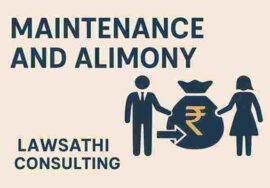Different Kinds of Civil Suits/Proceedings
These are different kinds of civil suits/proceedings with distinct purposes:
Restitution Suit
Meaning: A suit filed to restore a party back to the position they were in before a wrongful act or unjust enrichment by the opposite party.
Example: If A pays money to B by mistake, A can file a suit for restitution (recovery) of that money.
A gets possession of land under a decree later set aside by a higher court.
The defendant can seek restitution of possession.
Use: Commonly arises under the doctrine of unjust enrichment or after a decree is reversed/varied on appeal (Section 144 CPC – Restitution).
Interpleader Suit (Order XXXV CPC)
Meaning: A suit filed by a person (the stakeholder) who is in possession of money/property, but two or more parties claim it against each other, and the stakeholder does not claim any right himself.
Example: A tenant pays rent but both X and Y claim to be his landlord. The tenant can file an interpleader suit and deposit rent in court, asking the court to decide who the real landlord is.
An insurance company faces two rival claimants (say, legal heirs of deceased).
The insurer files an interpleader suit and deposits the insured amount in court.
Use: Protects a neutral party from multiple liabilities and compels the rival claimants to contest among themselves.
Caveat Suit (Caveat Petition – Sec. 148A CPC)
Meaning: Not exactly a “suit,” but a legal safeguard where a person anticipates that another may file a case/application against them, and requests the court not to pass any order without hearing them.
Example: If A fears B may file for an injunction against his property, A can file a caveat to ensure the court does not grant an ex-parte injunction without notice.
Someone is likely to apply for a will’s probate. The other legal heir files a caveat to ensure they are heard before probate is granted.
Use: Prevents one-sided (ex parte) orders and ensures audi alteram partem (hear the other side).
Friendly Suit
Meaning: A suit filed by consent of both parties, often where there is no real dispute, but the parties want a court’s declaration/approval for legal formality.
Example: Companies may file a friendly suit to obtain a court decree validating an arrangement, merger, or settlement, or family members may do it to record a mutually agreed partition.
Two companies with a merger or restructuring file a friendly suit to get a decree of validation for future regulatory or tax certainty.
Use: To get a binding judicial recognition of an arrangement already agreed between parties, ensuring future enforceability.
✅ Summary Table : Different kinds of civil suits
Suit Type Purpose / Use
Restitution Suit: To restore the party to the original position after a wrongful act or reversed decree.
Interpleader Suit: To resolve rival claims where a stakeholder is neutral.
Caveat Petition: To prevent ex parte orders; ensures a hearing before adverse orders.
Friendly Suit: To get the court’s formal approval for an agreed arrangement.
Disclaimer: This article is for educational and informational purposes only. It provides a general understanding of legal remedies but does not constitute legal advice. For specific legal guidance, you can consult a legal expert.







